In this blog, we talk about the 5 components of fitness; however, have you ever wondered what fitness is? Fitness refers to an individual’s overall health, physical well-being, and capacity to participate in various physical activities.

Cardiovascular endurance, muscular strength and endurance, flexibility, and body composition are all aspects of fitness. It does not relate to a single characteristic but to factors contributing to a person’s overall physical abilities and health.
5 components of Fitness
Listed below are 5 components of fitness and the different types of fitness routines that one can follow for each of these 5 components of fitness.
1. Cardiorespiratory Fitness
Cardiorespiratory fitness is an essential feature of general health and well-being and is the first of the five fitness components. It refers to the efficiency and effectiveness of the circulatory and respiratory systems in providing oxygen to the body’s muscles during physical activity.
Let’s investigate the relevance of cardiorespiratory fitness, the first of the 5 components of fitness, its advantages, and how to improve and maintain it.
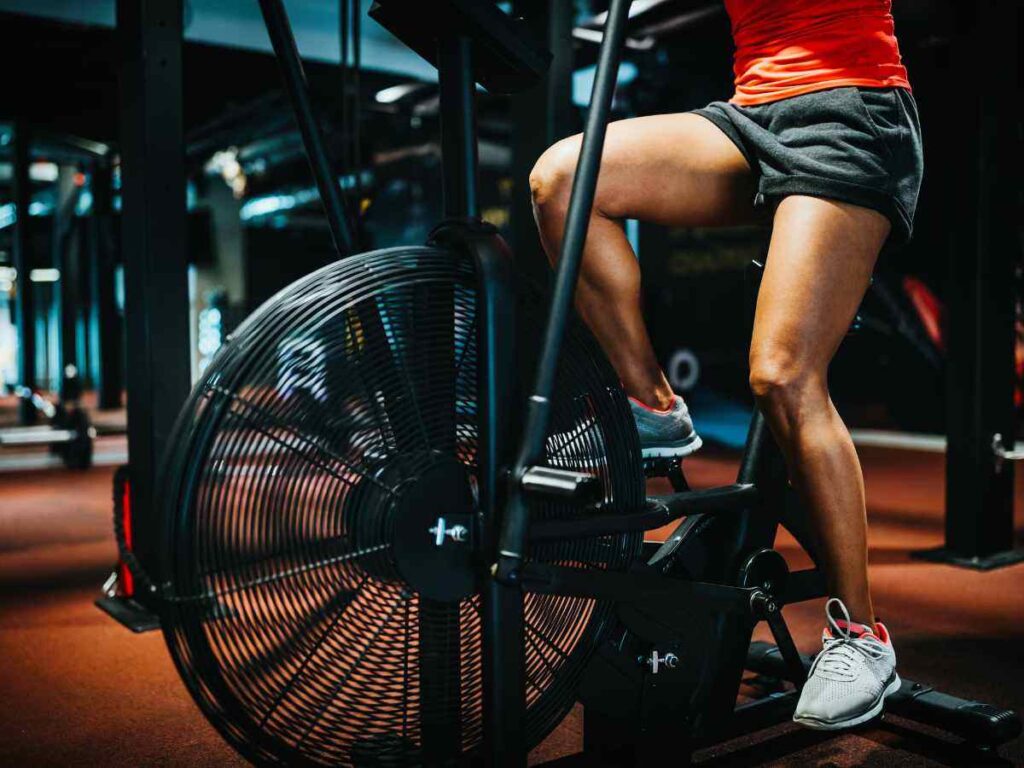
The Significance of Cardiorespiratory Fitness:
Cardiorespiratory fitness is essential for leading a healthy lifestyle. Here are some of the main reasons why it is critical:
- Improved Heart Health: Cardiovascular exercises like jogging, swimming, and cycling strengthen the heart muscle, helping it to pump blood more efficiently. This lowers the risk of cardiovascular disorders like heart attacks, hypertension, and strokes.
- Increased Respiratory Function: Increasing heart and breathing rates enhance lung capacity and oxygen exchange efficiency. This improves the respiratory system’s ability to supply oxygen to the body’s tissues and eliminate carbon dioxide.
- Increased Energy: Cardio workouts boost the transport of oxygen and nutrients to the muscles, resulting in increased energy generation and stamina. Individuals with stronger cardiorespiratory fitness typically have less fatigue and more endurance for daily duties and physical activity.
- Weight Management: Cardio exercises burn calories effectively, making them crucial for weight loss and management. Regular aerobic exercise can aid in creating a calorie deficit, resulting in fat loss and lean muscle mass retention.

- Mental Well-Being: Cardiovascular activities cause the release of endorphins, commonly known as “feel-good” hormones, that can alleviate stress, anxiety, and sadness. Cardio workouts regularly have been linked to increased mood, cognitive function, and overall mental well-being.
Aerobic Vs Anaerobic
Understanding the distinction between aerobic and anaerobic activities is critical when it comes to exercise. Both types of exercise have distinct advantages and have distinct consequences on the body.
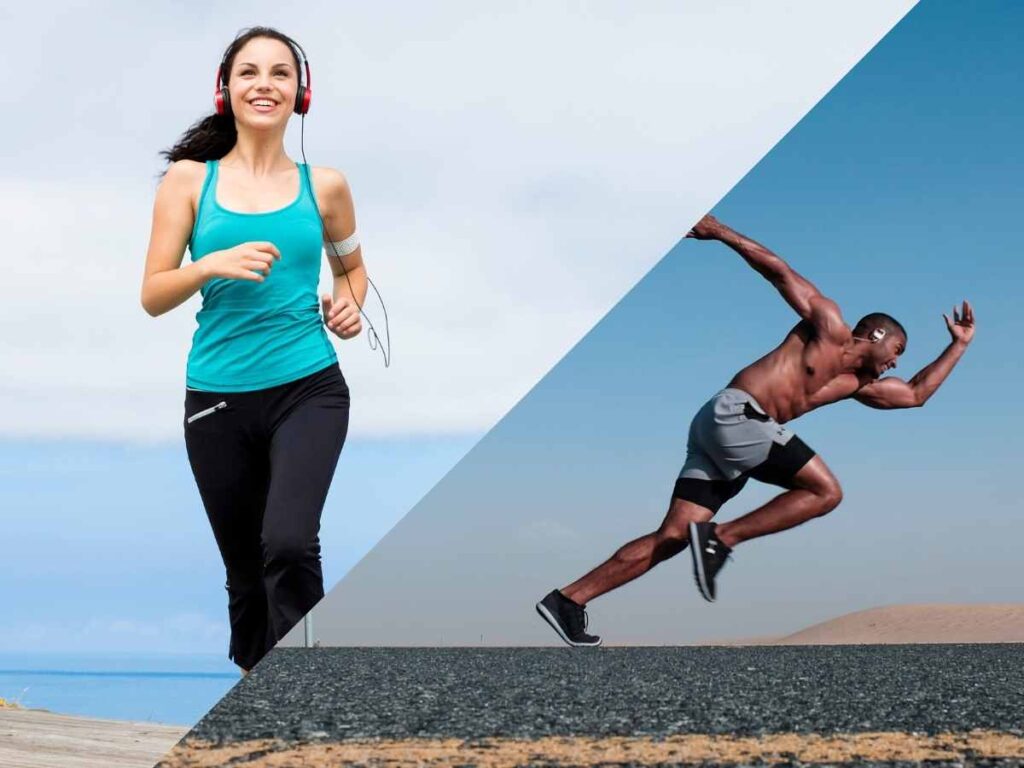
Aerobic exercise emphasizes endurance, relies on oxygen as its primary energy source, and provides benefits such as enhanced cardiovascular health, weight control, and increased endurance.
On the other hand, Anaerobic exercise emphasizes intensity, relies on energy stored within the muscles, and promotes benefits such as enhanced muscular strength, power, and EPOC.
By including aerobic and anaerobic activities in your training routine, you may maximize the advantages, attain a balanced approach to physical fitness, and cater to your objectives and preferences.
Before embarking on any new endeavor, consulting with a healthcare expert or a trained fitness trainer is usually advisable.
Aerobic Exercise
Aerobic or aerobic exercise entails activities that cause the heart and respiratory rates to rise for a sustained length of time. The body uses oxygen to generate energy to fuel the muscles during aerobic exercise. Here are some fundamental characteristics of aerobic exercise:
- Oxygen-dependent: Aerobic activities generate energy primarily through the availability of oxygen. The circulatory and respiratory systems of the body collaborate to give oxygen to the working muscles.
- Endurance-oriented: Aerobic activities are often defined by long, rhythmic motions that utilize vast muscular groups. These activities are carried out for an extended period of time, usually more than a few minutes.

Benefits of Aerobic Exercise:
Regular aerobic exercise has various advantages, including:
- Aerobic activities strengthen the heart muscle, enhance blood circulation, and lower the risk of heart disease.
- Improved respiratory function: Aerobic exercise improves lung capacity and efficiency, allowing for greater oxygen exchange.
- Weight management: Aerobic exercise promotes weight loss and maintenance by burning calories.
- Improved endurance: Aerobic activity enhances stamina, allowing people to engage in physical activity for longer periods.
- Mental well-being: Aerobic exercise causes endorphins to be released, which can boost mood, reduce stress, and improve cognitive performance.
Aerobic exercise is commonly associated with brisk walking, jogging, running, swimming, cycling, dancing, aerobics classes, and cardio devices such as treadmills or ellipticals.
Walking
Walking is a simple yet very effective activity that practically anyone can do. Regular walking, whether a leisurely stroll or a brisk power walk, can provide several health benefits. This article discusses the benefits of walking and offers useful hints for making the most of this easy yet powerful activity.
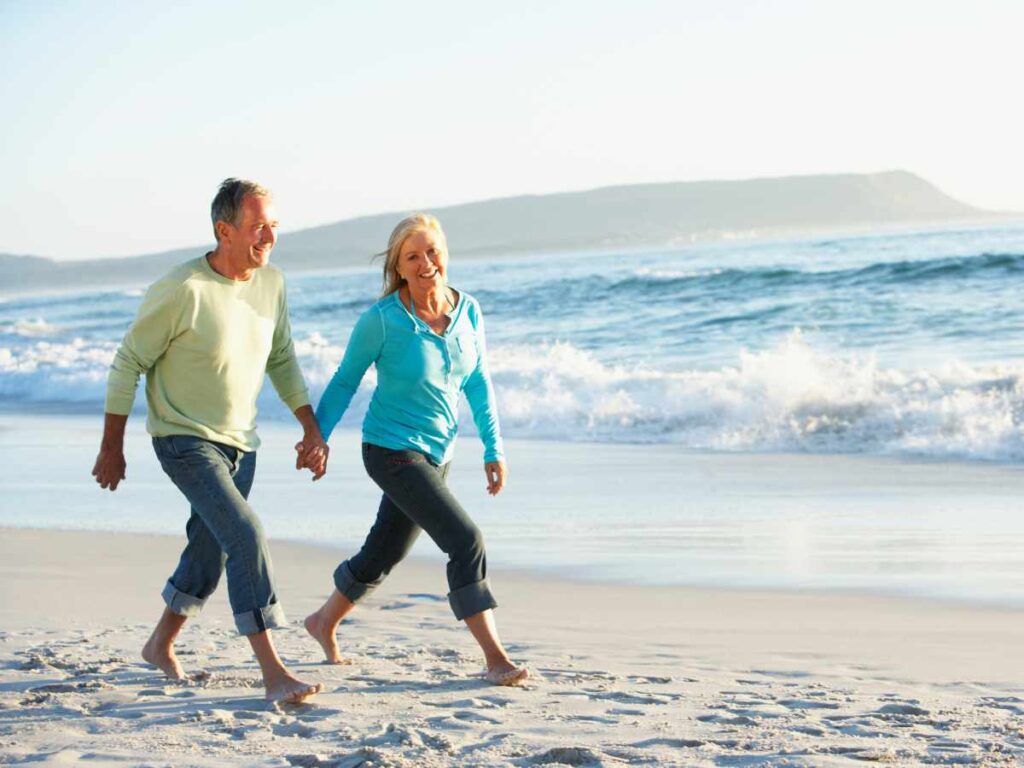
Walking Has Many Health Advantages:
- Physical Health: Walking is a low-impact activity that gives cardiovascular advantages, such as strengthening the heart and improving overall cardiovascular health. It can also aid with weight management, blood pressure control, and lowering the risk of chronic diseases like diabetes, stroke, and some types of cancer.
- Mental Health: Walking has been proven to improve mood as well as lessen stress and anxiety. A walk outside allows you to reconnect with nature, breathe fresh air, and clear your mind. It can increase brain clarity and cognitive function and possibly reduce depression symptoms.
- Increased Energy: Walking regularly can boost energy levels and combat weariness. Walking in the middle of the day or when you’re feeling sluggish can deliver a natural energy boost.
- Joint Health and Mobility: Compared to high-impact exercises, walking is a low-impact workout that puts little strain on the joints. It can increase joint flexibility, muscular strength surrounding joints, and overall mobility.
Swimming
Swimming is a popular recreational and excellent exercise that provides numerous advantages to people of all ages and fitness levels. Swimming is a refreshing way to stay active while boosting overall health and well-being, whether you like leisurely laps or intensive training. Let’s look at the various benefits of swimming and why it’s worthwhile to participate in this delightful aquatic sport.
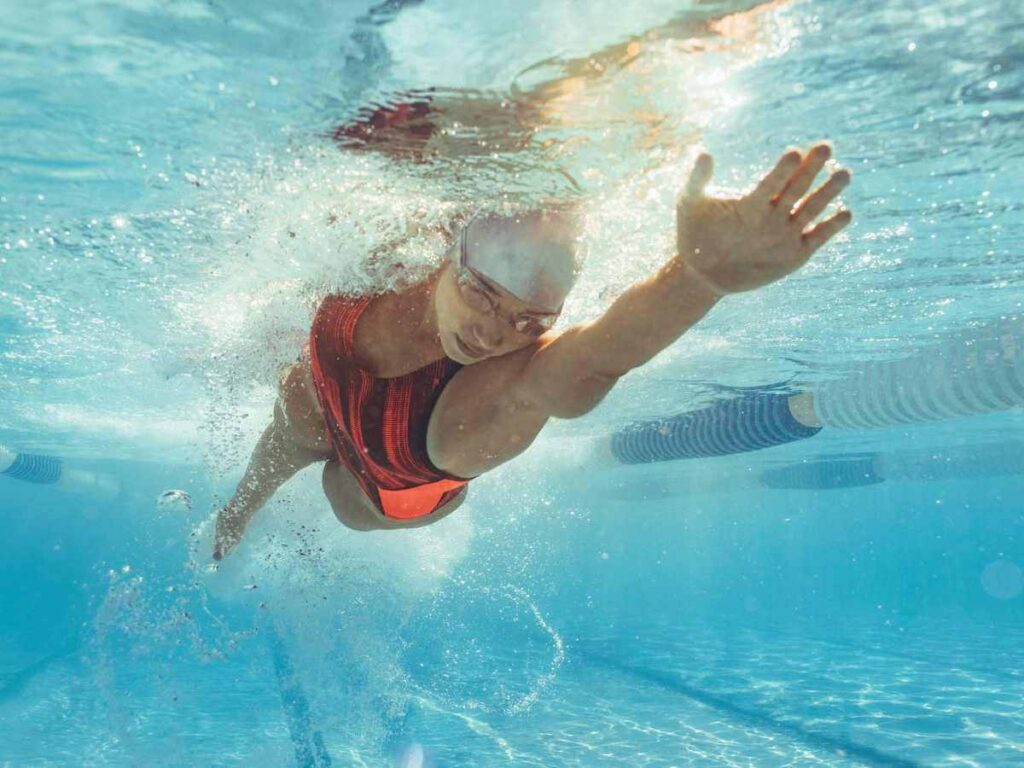
Physical Fitness Advantages:
- Full-Body Workout: Swimming engages practically all major muscle groups at the same time, delivering a full-body workout. It helps to strengthen and tone muscles, as well as improve strength and endurance.
- Cardiovascular Health: Swimming is a highly effective aerobic workout that raises the heart rate and increases cardiovascular fitness. Swimming regularly can help to strengthen the heart and improve lung capacity.
- Low-Impact Exercise: Swimming, unlike many other forms of exercise, is soft on the joints and reduces impact. Swimming is a great alternative for people who have joint pain or are recovering from an injury since the buoyancy of the water lowers stress on the body.
- Weight Management: Because of the resistance given by the water, swimming efficiently burns calories. It can aid in weight loss or maintenance, improving metabolism and lean muscle mass.
- Increased Flexibility: Swimming movements involve a wide range of motion, which enhances flexibility and joint mobility. Swimming regularly helps improve flexibility in the shoulders, hips, and other key joints.
Cycling
Cycling is an energizing and adaptable sport that combines the pleasure of movement with several health advantages. Cycling is a terrific way to keep healthy and enhance overall well-being, whether you ride for fun, commute to work, or conquer hard trails.

Physical Fitness Advantages:
- Cardiovascular Health: Cycling is a great aerobic workout that gets your heart beating and your lung capacity increasing. Cycling regularly strengthens the heart, increases blood circulation, and lowers the risk of cardiovascular illness.
- Weight Management: Cycling burns calories, making it an efficient weight management and fat loss tool. The intensity and duration of your rides can be modified to meet your fitness objectives.
- Muscle Tone and Strength: Cycling works various muscle groups, including the legs, core, and glutes. These muscles move the bike forward as you cycle, gradually increasing strength and tone.
- Joint-Friendly Exercise: Cycling is a low-impact sport that puts less strain on the joints, making it ideal for persons with joint problems or recovering from injuries. It provides a mild method of improving joint mobility and lowering the likelihood of impact-related injuries.
Hiking
Hiking is a thrilling outdoor sport that immerses you in nature while enjoying several physical and mental health advantages. Hiking connects with the great outdoors, whether you prefer to walk over gorgeous routes or engage in strenuous hikes. In this post, we’ll look at the benefits of hiking and why it’s such a great method to recharge your batteries.

Hiking helps you disconnect from daily life’s rush and bustle and reconnect with nature. Here are some of the reasons why you should put on your boots and hit the trails:
- Improved Physical Fitness: Hiking is an excellent approach to increase cardiovascular health, strength, and overall fitness. Climbing uphill, traversing uneven terrain, and climbing to different elevations exercise different muscle groups, developing endurance and flexibility.
- Mental Health: Being surrounded by nature improves mental health. Hiking lets you detach from devices, relieve stress, and renew your mind. It promotes relaxation, elevates mood, and increases creativity.
- Fresh Air and Serenity: Hiking takes you to stunning settings where you may breathe in fresh air and relax in the tranquillity of nature. The sights, sounds, and scents of nature all add to a sense of calm and refreshment.
- Variety and Adventure: Hiking provides many experiences, from peaceful nature hikes to difficult peak treks. There is a trail to suit your preferences and fitness level, whether you enjoy short, scenic hikes or lengthy trips.
- Wildlife Encounters: Hiking allows you to encounter wildlife and explore their natural habitats. These experiences, from birds tweeting to squirrels scurrying, provide a sense of surprise and admiration for the natural world.
Anaerobic Exercise
Anaerobic exercise consists of short bursts of intensive activity that exceed the body’s ability to supply enough oxygen to the working muscles. As a result, to satisfy the workout’s demands, the body looks to alternative energy sources. Anaerobic exercise has the following key characteristics:
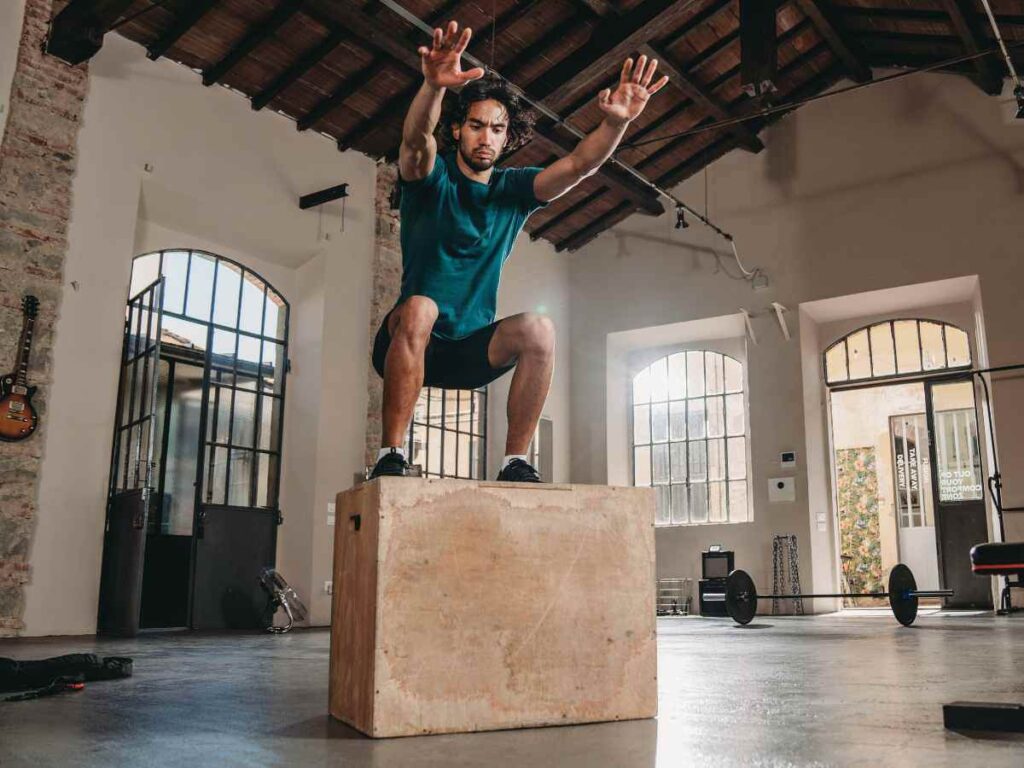
- Oxygen-independent: Anaerobic activities rely on energy sources stored inside the muscles, notably glycogen. These tasks do not necessitate a constant supply of oxygen.
- Intense and brief: Anaerobic activities are intense and performed at near-maximal effort for a short time. They usually endure from a few seconds to a few minutes.
- Anaerobic Exercise Advantages: Including anaerobic exercise in a fitness plan has various advantages, including:
- Increased muscular strength: Anaerobic workouts, such as weightlifting or resistance training, aid in developing and strengthening muscles.
- Increased power and speed: Sprinting, HIIT (High-Intensity Interval Training), and plyometric activities improve explosive power and speed.
- Increased bone density: Anaerobic activities strengthen bones and may prevent osteoporosis.
- EPOC (Excess Post-Exercise Oxygen Consumption): Anaerobic exercise can result in a prolonged period of increased calorie burning even after the workout, known as the “afterburn effect.”
HIIT Workouts
Because we live in a fast-paced world where finding time for regular exercise can be difficult, HIIT is becoming increasingly popular. Individuals can now make significant fitness gains in less time than traditional workout regimens because of the rise of High-Intensity Interval Training (HIIT).

HIIT has grown in popularity in recent years, and for a good reason: it is extremely effective at burning calories, improving cardiovascular health, and increasing overall fitness levels.
HIIT involves short bursts of intense activity followed by periods of lower-intensity recovery or rest. HIIT differs from steady-state workouts in that it entails pushing yourself to your maximum capacity for a short period of time, followed by a brief period of recovery before restarting the cycle. This cycle can be repeated several times, usually in 15 to 30-minute sessions.
HIIT has been demonstrated to improve insulin sensitivity, which aids in blood sugar regulation and lowers the risk of type 2 diabetes.
It can also improve cardiovascular health by enhancing cardiac function, expanding oxygen capacity, and lowering blood pressure. Furthermore, HIIT is a great strategy to maintain muscle mass while losing fat, making it ideal.
Incorporating HIIT into Your Routine
To begin with, HIIT, select an activity that you enjoy and are comfortable with. Try a 20-minute workout that includes 30 seconds of all-out effort (such as sprinting, jumping jacks, or burpees) followed by 30 seconds of active recovery (such as walking, leisurely cycling, or marching in place). You can gradually raise the intensity and duration of your intervals as your fitness level improves.
High-Intensity Interval Training is a quick and efficient technique to improve your fitness, burn calories, and improve your overall health. Its adjustability and accessibility make it an appealing alternative for people who want to stay active regardless of their schedule or exercise preferences.
By implementing HIIT into your everyday routine safely and consistently, you may gain its multiple benefits and take a step toward a healthier and more active lifestyle. Always contact a healthcare expert before beginning any new fitness plan to ensure it corresponds with your individual health needs and goals.
Circuit Training
Circuit training is a popular and effective kind of exercise that has received a widespread reputation in the fitness industry. It mixes several activities into a single workout session, concurrently addressing different muscle areas and cardiovascular endurance.

The attractiveness of circuit training stems from its efficiency, as it can be done fast while providing overall health advantages. In this post, we will look at the concept of circuit training, its benefits, and how to design an efficient circuit workout regimen.
The Basics of Circuit Training:
Circuit training executes a series of exercises known as stations with little rest. These exercises include Bodyweight exercises, resistance training, cardio workouts, and flexibility drills.
Before going on to the next station, each station is completed for a defined length or number of repetitions. After all, stations have been finished, a brief rest period is followed by the circuit being restarted. Depending on individual fitness levels and goals, the number of circuits performed throughout a session may vary.
Benefits of Circuit Training:
- Time Efficiency: Finding time for exercise in our fast-paced lives can be difficult. Circuit training saves time by combining strength training and cardio in one session, eliminating the need for separate sessions.
- Full-Body Workout: Unlike typical workouts that may just focus on strength or endurance, circuit training works for multiple muscle groups, resulting in a balanced and full-body workout.
- Increased Cardiovascular Fitness: Moving from one exercise to the next in a circuit raises the heart rate, effectively enhancing cardiovascular endurance.
- Calorie Burn: Because circuit training is high-intensity, it can result in large calorie expenditure, assisting in weight management and fat loss.
- Versatility: Because workouts may be tailored to different fitness levels, circuit training is excellent for both beginners and seasoned fitness aficionados.
Sprinting Workouts
Sprinting, the act of running at maximum speed for short distances is an essential component in many sports and a fantastic standalone workout for people looking to improve their athleticism, burn calories, and improve their general fitness.

Sprinting workouts are a high-intensity, dynamic training method that activates several muscle groups, enhances cardiovascular fitness, and increases explosive power.
The Benefits of Sprinting Workouts
- Better Cardiovascular Health: Sprinting workouts severely activate your cardiovascular system, boosting heart rate and supporting better blood circulation. Sprinting on a regular basis can improve your heart’s efficiency and, thus, your overall cardiovascular health.
- rapid Power: The rapid nature of sprinting aids in the development of fast-twitch muscle fibers, which are responsible for producing swift and strong motions. This advantage can be extended to other sports, giving sportsmen a competitive advantage.
- Increased Metabolism: Sprinting workouts can increase your metabolism and calorie burn afterward. Excess post-exercise oxygen consumption (EPOC) is a phenomenon that aids in weight management and fat loss.
- Time Efficiency: Sprinting workouts may be done quickly, making them excellent for people with hectic schedules who nevertheless want to make major fitness gains.
- Muscle Toning: Sprinting utilizes multiple muscular groups, including the glutes, hamstrings, quadriceps, and core, resulting in enhanced muscle definition and toning.
Weight Lifting
Weight lifting is a powerful kind of exercise that involves lifting weights or employing resistance to challenge and build the muscles in the body. It is also known as resistance training or strength training. Weightlifting, contrary to popular belief, is not just for bodybuilders or athletes; it has several benefits for people of all ages and fitness levels.
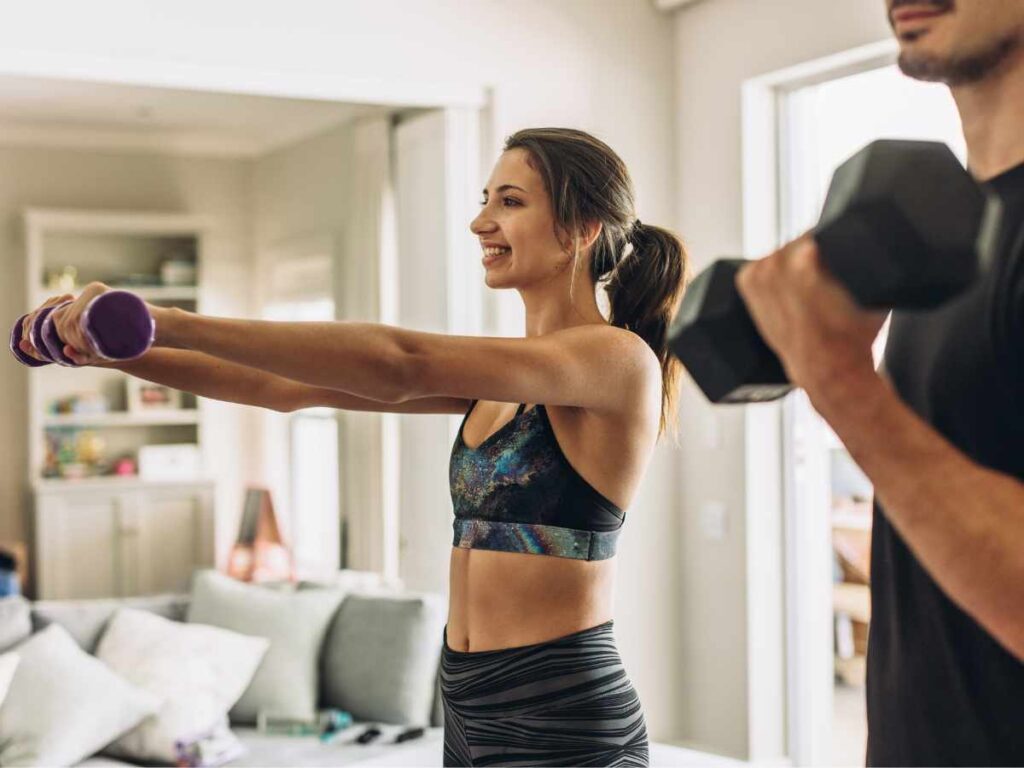
The Benefits of Weight Lifting:
- Increased Muscle Strength: Weight lifting loads the muscles greatly, stimulating them to grow and become stronger. Increased muscle strength increases physical performance and overall functional capacities in everyday life.
- Muscle Tone and Definition: Weight lifting on a regular basis assists in building a toned and defined physique. The physique seems more contoured and athletic as muscles build and fat is lost.
- Bone Health: Weight lifting is good for your bones since it stresses them, increasing bone density and lowering your chances of osteoporosis and fractures.
- Metabolism Boost: It takes energy to build and repair muscular tissue after weight lifting. As a result, weight lifting can raise metabolism, resulting in higher calorie burn and possibly aiding in weight loss.
- Improved Body Composition: Weight lifting helps to develop muscle and reduce body fat. This combination enhances body composition, resulting in a healthier and more appealing physique.
Different Types of Weight Lifting Exercises:
- Compound Exercises: Because compound exercises incorporate many muscle groups and joints, they are extremely effective at increasing overall strength. Squats, deadlifts, bench presses, and overhead presses are a few examples.
- Isolation Exercises: Isolation exercises to target specific muscle groups, allowing you to concentrate on specific regions for increased definition and muscle growth. Bicep curls, tricep extensions, and leg curls are a few examples.
- Free Weights vs. Machines: Weight lifting can be done with either free weights (dumbbells and barbells) or weight machines. Free weights necessitate greater stabilization and engage supporting muscles, however, machines can exercise useful for isolating specific muscles while reducing the chance of injury.
Cardiorespiratory fitness is an important part of living a healthy lifestyle. Regular aerobic exercise, as well as good diet and hydration, can enhance heart health, respiratory function, energy levels, weight management, and mental well-being significantly.
You can improve your cardiorespiratory fitness and enjoy its myriad benefits to your general well-being by including cardio activities into your routine and gradually challenging yourself. Maintaining a lifelong commitment to cardiorespiratory fitness requires consistency and fun.
2. Musculoskeletal Fitness
Second important component is the musculoskeletal fitness out of 5 components of fitness.
Muscular Strength
Muscular strength, a part of the second point of the 5 components of fitness, is a fundamental component of physical fitness that is essential for daily activities, sports performance, and general health. It is the maximal force that a muscle or set of muscles can apply against the opposition. Muscular strength development improves physical skills and provides several benefits, including improved posture and injury prevention, as well as enhanced confidence and resilience. In this post, we will look at physical strength, its importance, how it is developed, and the benefits it provides to people of all ages and fitness levels.
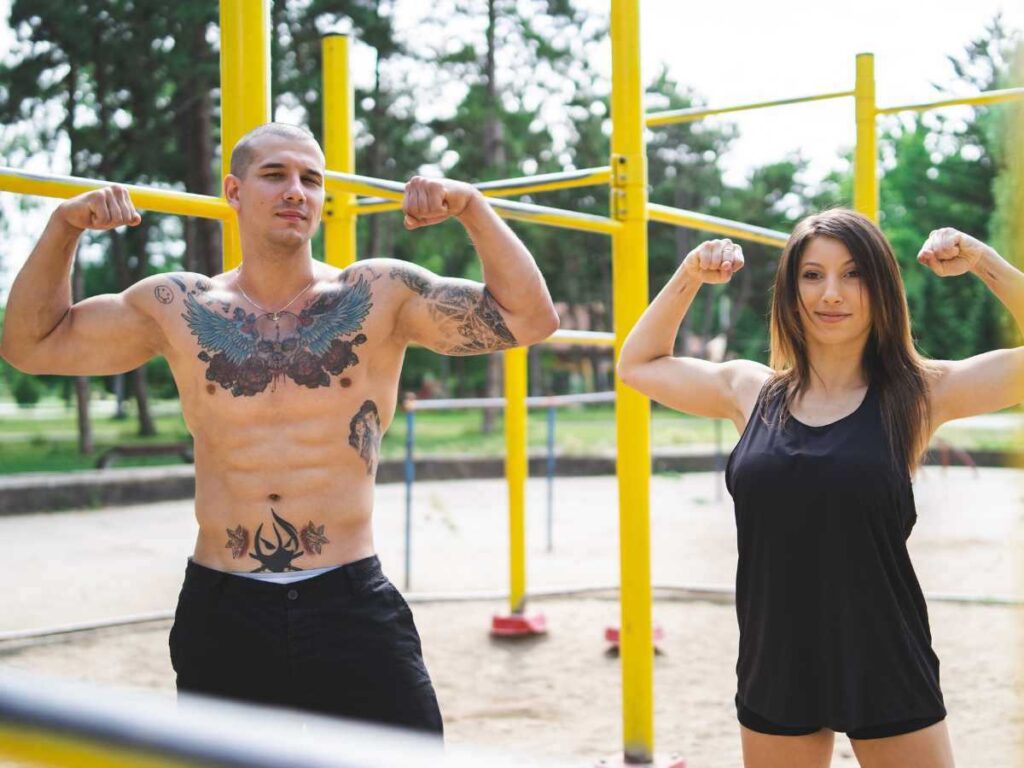
The Importance of Muscular Strength:
- Improved other Performance: Muscular strength is required for success in sports and other activities that involve power, explosiveness, and agility. Strong muscles can increase overall performance in a variety of ways, from lifting heavy objects to jumping higher and running faster.
- Injury Prevention: Strong muscles give better joint support and stability, lowering the chance of injury during physical activity or even ordinary movements.
- Better Posture and Alignment: Muscular strength contributes to better posture and spinal alignment, which reduces back strain and the probability of chronic pain.
- Increased Metabolism: Strength training can enhance the body’s resting metabolic rate, resulting in more effective calorie burning and weight management.
- Mental Advantages: In addition to physical benefits, muscular strength can promote mental resilience and confidence. Strength objectives can increase self-esteem and build a positive body image.
Advantages of Muscular Strength:

- Increased Independence: Strong muscles make ordinary chores easier and more bearable, such as carrying groceries or climbing stairs, encouraging independence and mobility in daily life.
- Longevity and Quality of Life: Maintaining muscular strength becomes increasingly crucial as we age in order to retain functionality and avoid age-related muscle loss, commonly known as sarcopenia.
- Injury Rehabilitation: Muscular strength is frequently an important component of injury rehabilitation regimens, aiding in recovery and preventing future injuries.
- Sports Performance: Muscular strength is an important aspect in increasing performance and reaching peak athletic capabilities for athletes.
Muscular Endurance
Muscular endurance is an important part of physical fitness that defines a muscle’s ability to sustain contractions for an extended amount of time. physical endurance, as opposed to physical strength, is concerned with the ability to perform repetitive motions without becoming fatigued.
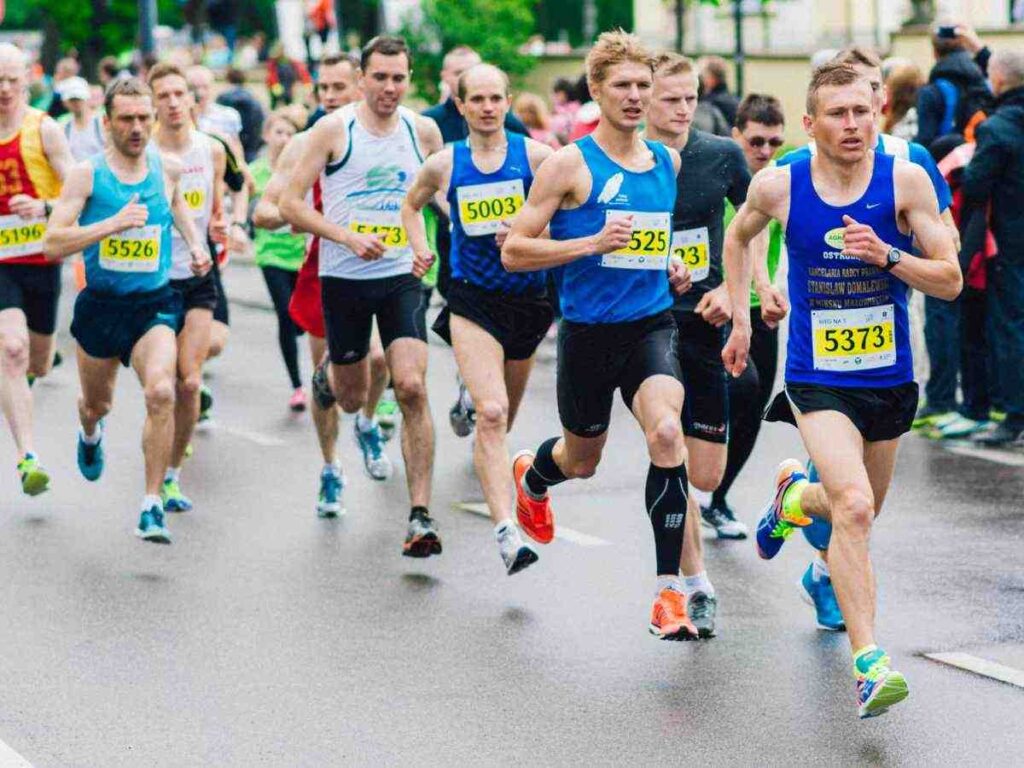
This important fitness component is important in a variety of activities, from endurance sports to everyday jobs. In this post, we will look at the notion of muscular endurance, its significance, how it may be developed, and the benefits it has for general health and performance.
Benefits of Muscular Endurance:
- Physical Activity Endurance: Increased muscle endurance allows individuals to engage in physical activities for longer periods of time without becoming weary, resulting in improved performance and enjoyment.
- Postural Stability: muscle endurance improves postural stability, lowering the likelihood of muscle imbalances and related discomfort.
- Efficient Workouts: Improving muscular endurance can lead to more efficient workouts since muscles can sustain activity for longer periods of time, resulting in greater training benefits.
- Increased Mental Stamina: Increasing muscular endurance necessitates mental attention and dedication. This mental resilience can be applied to other aspects of life, encouraging a positive attitude and increased confidence.
Overall Fitness: By combining muscular endurance training with other areas of fitness such as strength and flexibility, a well-rounded and useful fitness regimen is created.
3. Flexibility
Flexibility is the third most important component of out of the 5 components of fitness.
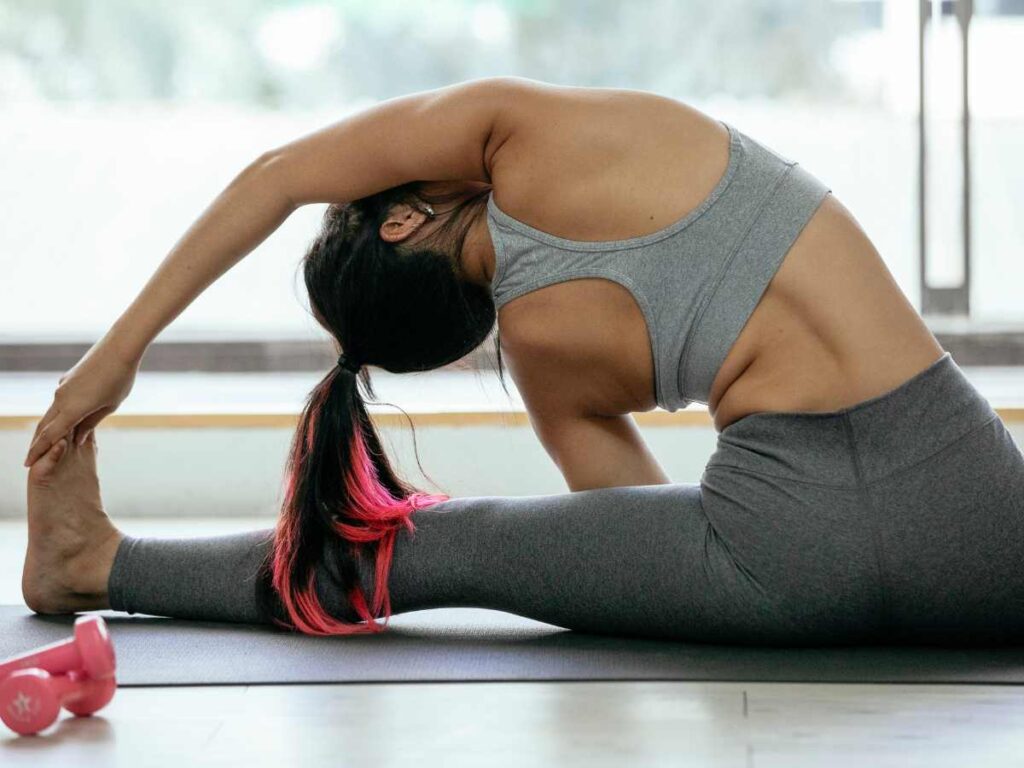
Dynamic Stretching
Dynamic stretching is a dynamic and effective warm-up technique that is popular among athletes, fitness enthusiasts, and others looking to enhance their flexibility and range of motion. Dynamic stretching, as opposed to static stretching, which includes holding a stretch for an extended period of time, involves continuous and controlled movements that mirror the motions employed in sports or physical activities.
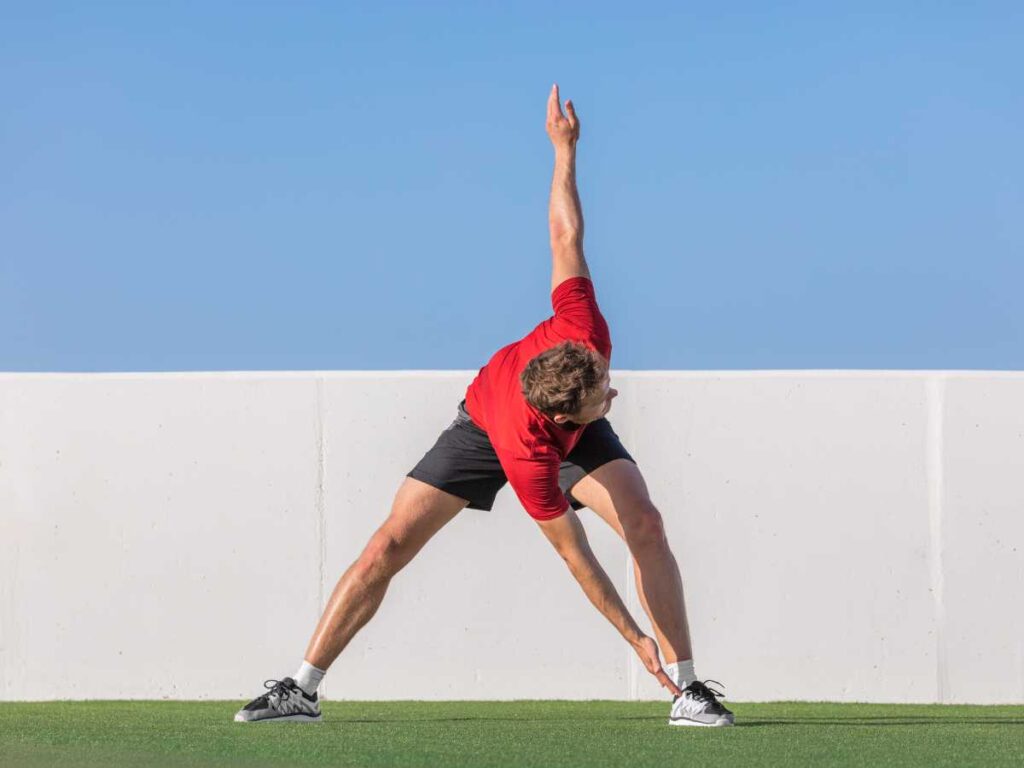
This type of stretching not only prepares the body for exercise but also aids in the prevention of injuries and improves overall athletic performance. In this post, we will look at the concept of dynamic stretching, its advantages, examples of dynamic stretches, and how to implement them into your exercise regimen.
Benefits of Dynamic Stretching:
- Improved Blood Circulation: Dynamic stretching enhances blood flow to the muscles, supplying oxygen and nutrients required for peak performance.
- Increased Range of Motion: Stretching dynamically improves joint flexibility and range of motion, allowing for more extensive and fluid movements during physical activity.
- Injury Prevention: Dynamic stretching minimizes the risk of strains and injuries during exercise by warming up the muscles and joints.
- Improved Athletic Performance: Dynamic stretching prepares the body for the dynamic movements required in sports, which leads to better agility, balance, and overall athletic performance.
- Efficient Warm-Up: Dynamic stretching is an effective warm-up exercise that combines stretching with active motions to engage numerous muscle groups at the same time.
Ballistic Stretching
Ballistic stretching is a sort of dynamic stretching that stretches the muscles with fast, bouncing movements. Unlike static stretching, which includes holding a posture for an extended period of time, ballistic stretching involves leveraging the body’s momentum to force a limb or joint beyond its normal range of motion. Leg swings, arm circles, and torso twists are common examples.
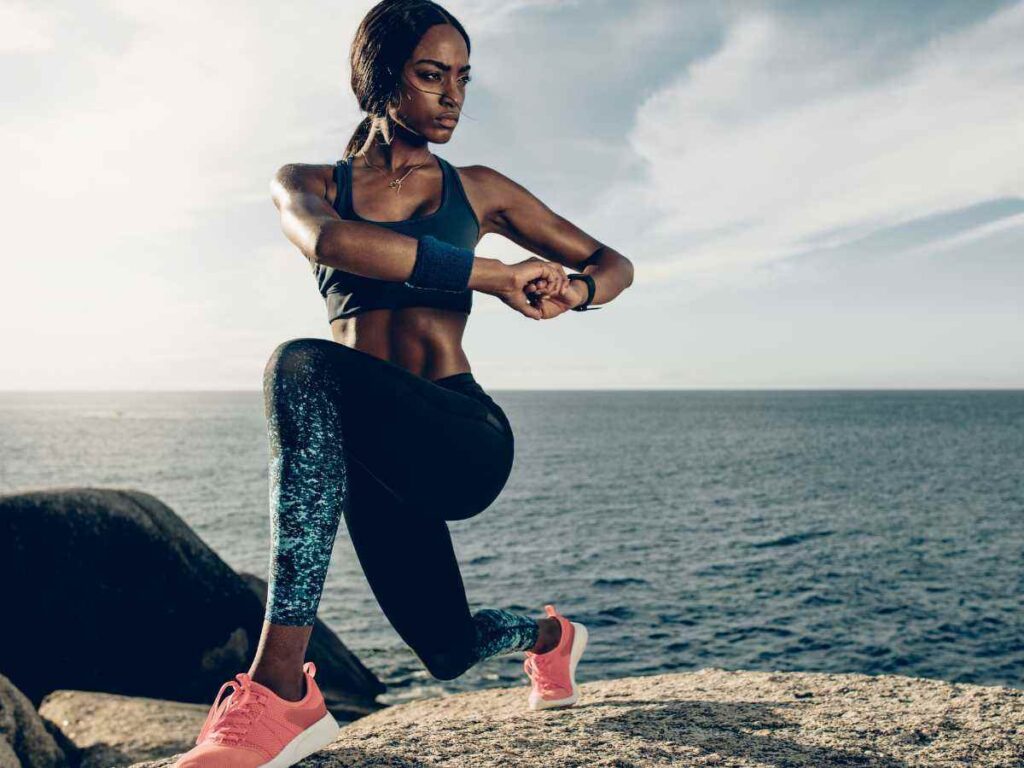
The Advantages of Ballistic Stretching:
- Increased Range of Motion: By extending the muscles through their complete range of motion, ballistic stretching seeks to increase flexibility and joint mobility. This is especially useful for athletes, dancers, and martial artists who must perform a variety of moves in their respective professions.
- Dynamic Warm-Up: Including ballistic stretches in your warm-up routine might help your body prepare for more strenuous physical activities. Dynamic exercises enhance blood flow to the muscles and prepare them for action, lowering the risk of injury.
- Sports Performance Enhancement: Ballistic stretching can help athletes who participate in sports that require explosive movements, such as sprinting and jumping. It prepares the muscles and neurological system for rapid and powerful contractions.
- Time-Efficient: Because ballistic stretches can be performed rapidly, they are an excellent alternative for people who have limited time for exercise or stretching.
Static Stretching
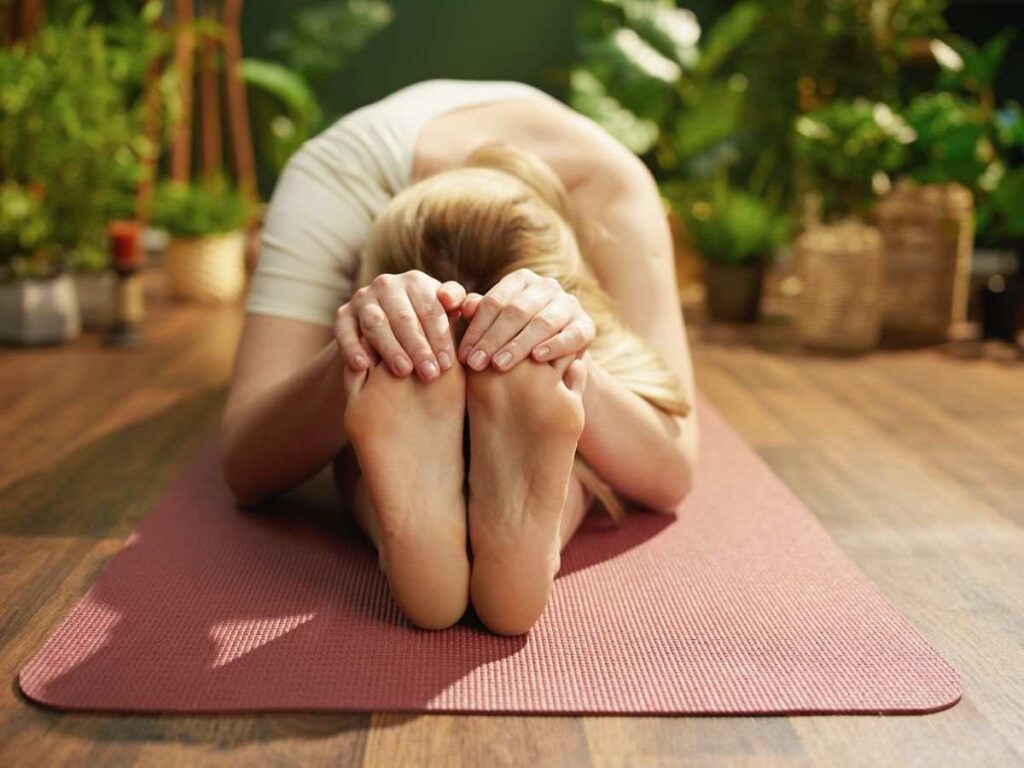
Active Stretching
Active stretching is a type of stretching in which the person actively employs their own muscles to move a joint through its range of motion without the use of a stretcher. Active stretching, as opposed to passive stretching, which relies on an external force or a partner to move the joint, relies on the individual’s own muscle contractions to create the stretch. Active stretching is frequently utilized as a pre-or post-physical activity or workout warm-up or cool-down strategy.
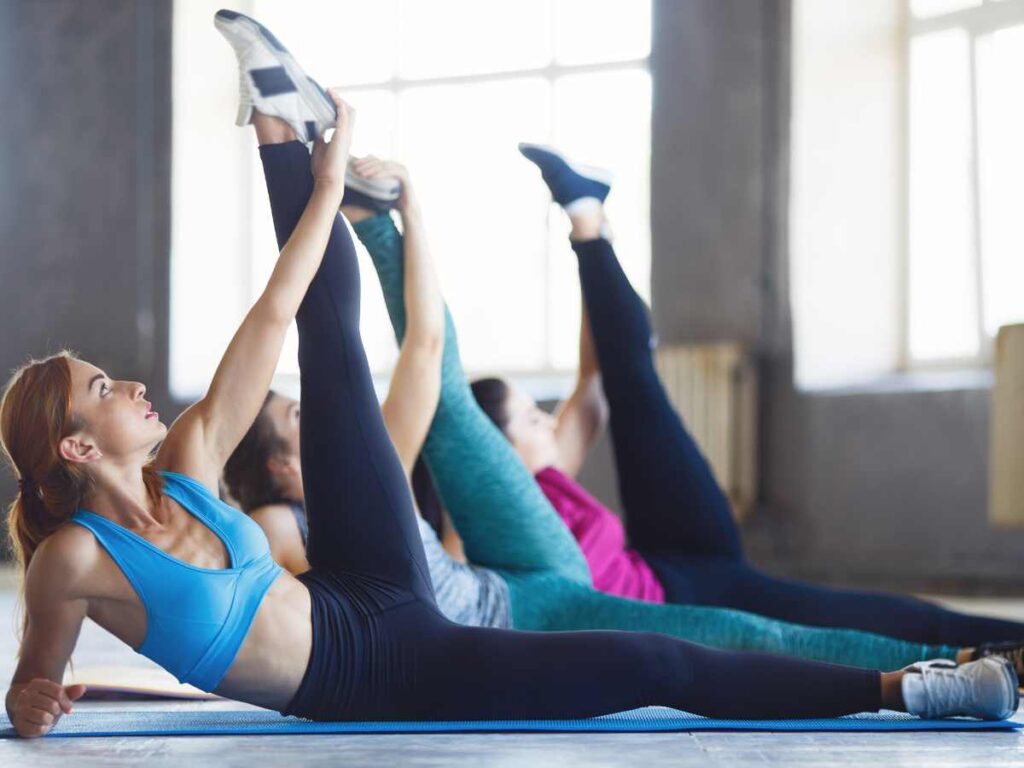
Active stretching involves contracting the antagonist muscles (those opposite the muscles being stretched) to allow the target muscles to elongate and stretch. This is known as reciprocal inhibition, and it aids in the promotion of a deeper and safer stretch. Active stretching not only improves flexibility but also body awareness and posture.
There are two main types of active stretching:
- Active Static Stretching: In this type of active stretching, the individual retains a stretch position utilizing their own muscle strength without the assistance of anybody else. Lifting one leg straight in front of you and holding it there with your quadriceps muscles is an example.
- Active Dynamic Stretching: Active dynamic stretching entails employing muscular effort to move a joint through its range of motion in a controlled manner. This style of stretching is frequently done in a continuous, rhythmic motion. Leg swings, arm circles, and walking lunges are a few examples.
Benefits of Active Stretching:
- Increased Flexibility: Active stretching encourages muscles to extend and adapt to new postures, which increases flexibility and range of motion.
- Increased Muscle Activation: Active stretching engages the muscles that are being used, resulting in increased muscle activation and awareness.
- Improved Warm-Up: Active stretching is a great warm-up strategy since it prepares the muscles and joints for more strenuous exercises.
- Injury Prevention: By increasing flexibility and improving muscle coordination, regular physical stretching can lower the chance of injury.
- Improved Circulation and Nutrient Delivery: Active stretching improves circulation and nutrient delivery by increasing blood flow to the muscles.
Passive Stretching
Passive stretching is a type of stretching that involves using an external force or aid to move a joint through its range of motion in order to generate a stretch. Unlike active stretching, in which the individual actively employs their own muscles to move the joint, passive stretching is created by an outside force. A partner, a stretching gadget, gravity, or the individual’s own weight can all generate this outside force.
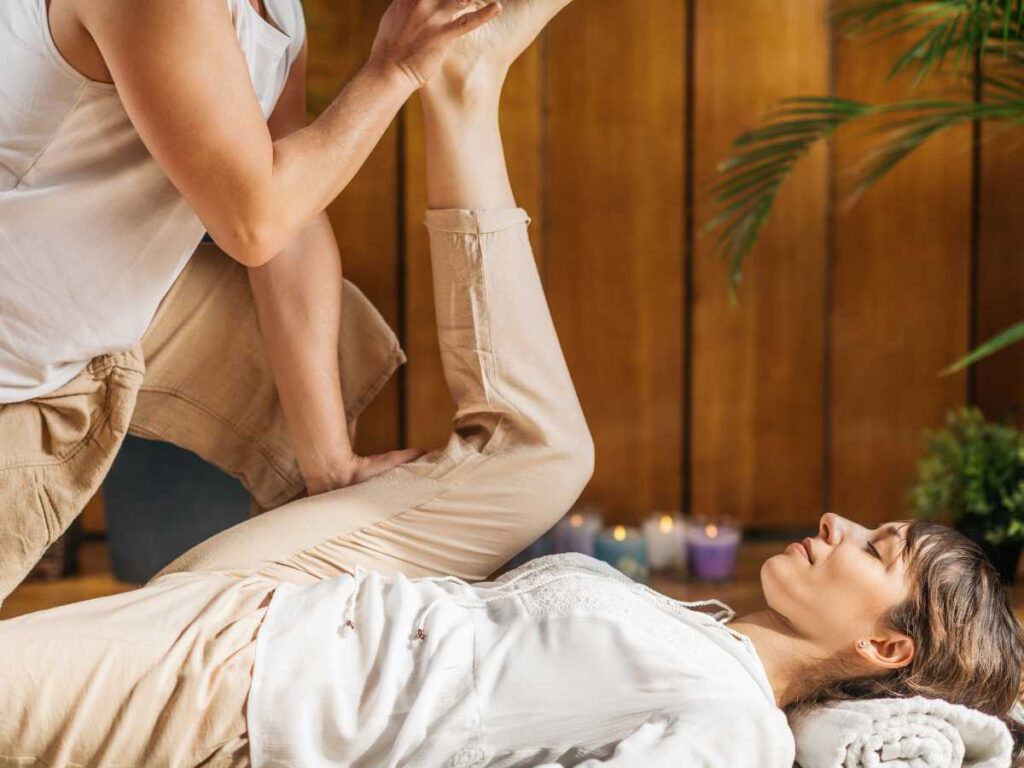
The subject being stretched stays relaxed during passive stretching, allowing the external force to determine the movement and severity of the stretch. This type of stretching is commonly employed in yoga programs, physical therapy sessions, and flexibility training.
There are two main types of passive stretching:
- Static Passive Stretching: In this type of passive stretching, the external force maintains the stretch position without moving for a set period of time. The stretched person does not actively contribute to the stretch and stays comfortable.
- Assisted Passive Stretching: Assisted passive stretching is using a partner, a stretching device, or gravity to help move the joint through its range of motion. The person being stretched may also contribute to the stretch slightly by relaxing and allowing the aid.
Benefits of Passive Stretching:
- Improved Flexibility: Passive stretching improves flexibility by gently extending muscles and connective tissues.
- Relaxation and tension Relief: As the individual allows their body to be guided into the stretch, passive stretching can produce a sensation of relaxation and relieve tension.
- Increased Range of Motion: Passive stretching on a regular basis can enhance joint range of motion and mobility.
- Targeted Stretching: Using a partner or a gadget, passive stretching allows for precision targeting of specific muscle groups and body locations.
- Injury Rehabilitation: In physical therapy, passive stretching is often used to aid in the rehabilitation of injured muscles and joints.
Tips for Safe and Effective Passive Stretching:
- Warm-up: Perform a warm-up or light aerobic activity before to passive stretching to enhance blood flow and prepare the muscles for stretching.
- talk: If you are stretching with a partner, talk with them about the intensity and comfort level of the stretch to avoid damage.
- Relax and Breathe: Focus on relaxing and breathing deeply during passive stretching to increase the effectiveness of the stretch and reduce stress.
- Be Gentle: Avoid pushing the stretch beyond your comfort zone or forcing the joint into painful or uncomfortable positions.
- Include Active Stretching: While passive stretching has advantages, for a well-rounded approach, active stretching and dynamic movements should be included in your flexibility program.
PNF Stretching
PNF stretching (Proprioceptive Neuromuscular Facilitation) is a more advanced stretching method that combines stretching and muscle contraction to improve flexibility and range of motion. Because of its effectiveness in developing muscle flexibility and improving neuromuscular control, it is commonly employed in physical therapy, sports training, and rehabilitation settings.
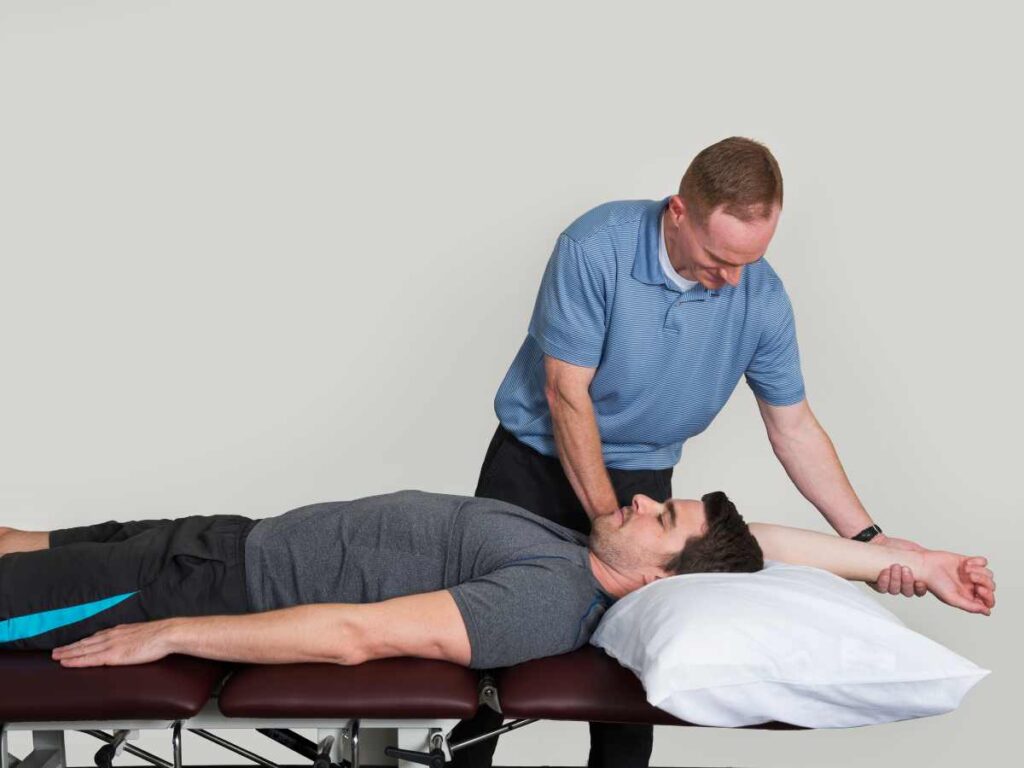
Dr. Herman Kabat and his colleagues invented the PNF stretching method in the 1940s. It is based on the idea of proprioception, which refers to the ability of the body to sense its location in space as well as the relative position of its parts.
There are various PNF stretching strategies, but the Hold-Relax (HR) and Contract-Relax (CR) methods are the most widely used:
- Hold-Relax (HR) Method: This technique involves passively lengthening the muscle to be stretched, followed by an isometric contraction of that muscle against resistance for 6-10 seconds. The muscle is relaxed after the contraction, and the stretch is raised further. This method is performed several times.
- Contract-Relax (CR) Method: The CR method is similar to the HR method, but there is one key distinction. Following the initial passive stretch, the individual contracts the muscle opposite the one being stretched (antagonist) for around 6-10 seconds. This contraction allows for a deeper stretch in the target muscle.
Benefits of PNF Stretching:
- Increased Flexibility: PNF stretching improves flexibility by targeting both the muscles being stretched and the neuromuscular system.
- Increased Range of Motion: Because PNF stretching increases flexibility, it allows for a broader range of motion in the joints, resulting in increased functional mobility.
- Injury Rehabilitation: In physical therapy, PNF stretching is often utilized to aid in the recovery and rehabilitation of injured muscles and joints.
- Time-saving and efficient: PNF stretching can deliver significant results in less time than standard static stretching.
- Neuromuscular Control: PNF stretching improves neuromuscular communication, which leads to better muscle coordination and control when moving.
4. Balance
Fourth important component is balance out of the 5 components of fitness.
One Legged Stand
The one-legged stand balance technique is a straightforward but effective exercise for improving balance, stability, and proprioception. Thus, entering the fourth category under the 5 components of fitness. Standing on one leg tests the body’s homeostasis, engaging the muscles responsible for stability and increasing body awareness. This activity is beneficial to people of all ages and fitness levels, providing a variety of benefits in addition to physical benefits.

Standing on one leg while maintaining an upright and steady posture is the one-legged stand balance method. The non-supporting leg is elevated off the ground slightly, either with the foot resting on the opposing ankle or raised to knee level. For balance, hold the arms out to the sides, or place them on the hips to engage the core muscles even more.
Benefits of the One-Legged Stand:
- Improved balancing and equilibrium: The one-legged stand balancing exercise tests the body’s ability to maintain equilibrium, improving balance and lowering the danger of falling and injuring oneself.
- Improved Proprioception: Proprioception is the knowledge of one’s body’s position in space. Standing on one leg improves proprioceptive abilities, resulting in improved general body control and coordination.
- Strengthened Leg Muscles: To maintain balance, the muscles of the supporting leg, especially the quadriceps, hamstrings, and calf muscles, are engaged, resulting in improved strength in these muscles.
- Core Stability: When balancing on one leg, the abdominal and lower back muscles work together to maintain the body upright and balanced.
- Increased Concentration: The one-legged stance requires concentration and focus, fostering mental clarity and mindfulness during exercise.
Variations of the One-Legged Stand:
- Closed Eyes: Once you’re comfortable with the basic one-legged stand, try closing your eyes. This variation tests proprioception and balance even more.
- Dynamic Movement: While keeping balance on the supporting leg, lift the non-supporting leg and swing it forward, backward, or sideways. This dynamic movement increases the difficulty of the exercise.
- Yoga Tree Pose: The Tree Pose in yoga is a version of the one-legged stand that entails extending the non-supporting foot to the inner thigh of the supporting leg. For an added balancing difficulty, bring the hands to a prayer position at the chest.
Star Excursion Balance Test
The Star Excursion Balance Test (SEBT) is a functional and dynamic assessment test that is used to examine a person’s dynamic balance, lower limb stability, and risk of lower extremity injuries.
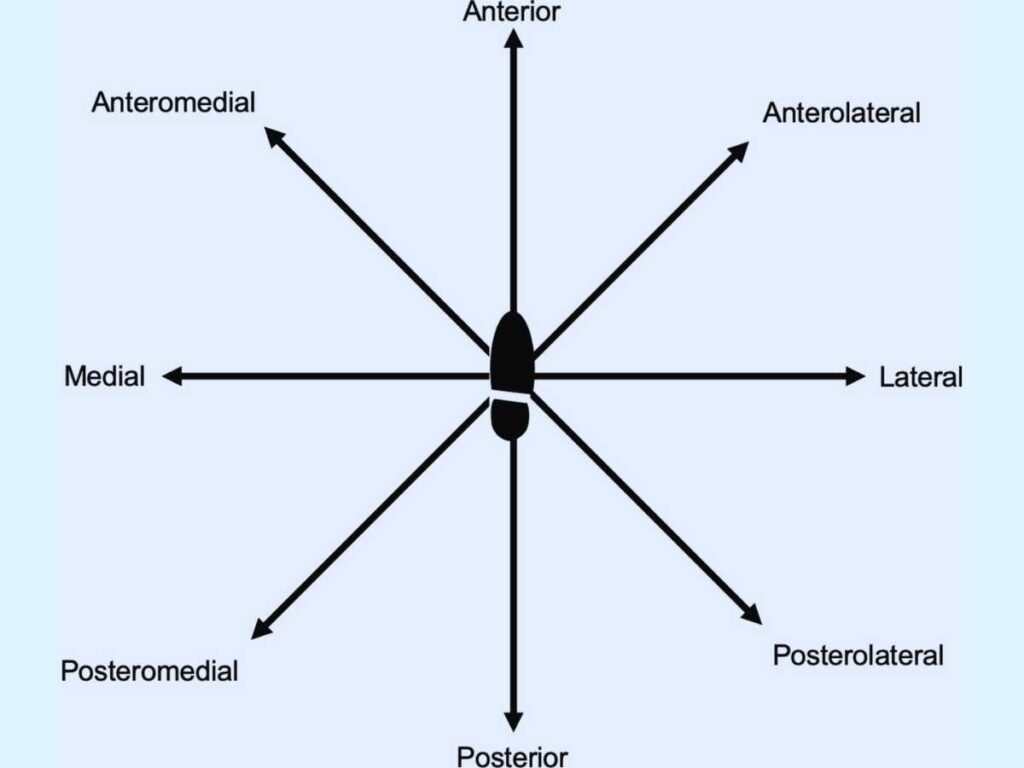
It evaluates a person’s ability to maintain balance and stability while reaching in numerous directions, imitating the demands placed on the lower limbs during sports and daily activities. The significance of the Star Excursion Balance Test, its administration, benefits, and uses in injury prevention and rehabilitation will be discussed in this article.
The Star Excursion Balance Test (SEBT) Protocol
The SEBT is conducted by laying down a star-shaped grid with eight lines spreading outward from a central point on the floor. Each line indicates a reach direction, and the individual stands on one leg in the middle of the star. They are told to reach as far as they can along each line while remaining balanced. The test is usually done on both legs, and the average reach distance in each direction is measured.
Benefits and Applications of the SEBT:
- Injury Risk Assessment: The SEBT is a great tool for identifying those who are at a higher risk of lower limb injuries such ankle sprains and knee problems. A reduction in reach distance in some directions may suggest deficiencies or imbalances that could lead to injury during sports or physical activities.
- Functional Balance Assessment: The SEBT examines dynamic balance and the capacity to control movement during weight-bearing tasks, as opposed to static balance assessments. As a result, it is a more functional balance assessment for athletes and active people..
- Customized Rehabilitation: The SEBT can assist physical therapists and healthcare professionals in developing targeted rehabilitation programs for people who have suffered lower limb injuries. Exercises can be modified to address specific areas of weakness after those areas have been identified.
- Monitoring Progress: The SEBT can track a person’s progress during rehabilitation or balance training programs. Improvements in balance and stability can be objectively tested by repeating the test over time.
- Sport-Specific Training: Incorporating SEBT-based activities into athletes’ training routines can be beneficial. This can improve their proprioception, balance, and stability, enhancing performance and lowering their risk of injury.
Administering the SEBT:
- Warm-up: Before taking the SEBT, the individual should warm up to enhance blood flow to the muscles and prepare the body for the test.
- Test Setup: Place the star-shaped grid on a flat surface and have the individual stand in the center of the star with one foot on the ground.
- Reach Directions: Assign the individual the task of reaching as far as possible along each of the eight lines while remaining balanced on the standing leg. To eliminate prejudice, the order of reach directions is usually randomized.
- Measurements: Record the distance traveled in each direction, and then repeat the test on the opposite leg.
- Analysis: Compare the reach distances between legs and assess any asymmetries or shortened reach distances in certain directions.
The Star Excursion Balance Test (SEBT) is a useful and practical instrument for assessing athletes’ and active people’s dynamic balance, lower limb stability, and injury risk. The SEBT simulates the demands of sports and daily activities to offer a functional assessment of balance and stability. It can help with injury prevention, personalized rehabilitation, and sport-specific training, making it an important part of injury management and performance enhancement programs.
Proper administration and interpretation, like with any assessment, are required for accurate and relevant outcomes. The SEBT, in conjunction with other functional tests, can thoroughly evaluate an individual’s balance and lower limb capabilities, assisting them in remaining injury-free and performing at their best. Individuals are recommended to seek the advice of skilled healthcare specialists or licensed athletic trainers for their specific needs.
Yoga And Pilates

Yoga and Pilates are two well-known mind-body disciplines known for their multiple health benefits and holistic approach to well-being. While certain commonalities exist, each field has its own philosophy and purpose. Yoga and Pilates both promote strength, flexibility, balance, and inner calm via a seamless integration of physical exercises, breathwork, and mental awareness. In this post, we’ll look at the origins, concepts, advantages, and significant distinctions between Yoga and Pilates, so you may better understand and choose the practice that’s right for you.
Key Benefits of Yoga and Pilates:
- Improved Flexibility: Yoga postures stretch and lengthen muscles gently, enhancing flexibility and joint mobility.
- Stress Reduction: Yoga’s blend of physical movement, breathwork, and meditation aids in stress reduction and relaxation.
- Increased Body Awareness: Yoga practice promotes mindfulness and a deeper connection with the body, which leads to increased self-awareness.
- Mind-Body Connection: Yoga helps people develop a stronger mind-body connection by making them more aware of their thoughts, emotions, and physical sensations.
- Holistic Wellness: Yoga promotes entire well-being, including mental, emotional, and spiritual elements of life, in addition to physical benefits.
- Pilates movements encourage healthy muscle growth, which reduces the likelihood of muscle imbalances and accidents.
- Flexibility and Mobility: Pilates emphasizes core strength while also including routines that improve flexibility and joint mobility.
- Body Awareness: Practicing Pilates improves body awareness and movement precision, resulting in improved control and coordination.
Differences Between Yoga and Pilates:
- Philosophy: Yoga is spiritual in nature and attempts to unify the mind, body, and spirit, whereas Pilates is primarily concerned with physical strength and body awareness.
- Breathing: Both practices contain breathwork, but in yoga, breathing is regarded as a critical component of the practice, whereas in Pilates, breathing supports movement and core engagement.
- Movement Style: Yoga focuses on holding postures for longer periods of time and flowing through sequences, whereas Pilates focuses on controlled and precise movements.
- Spirituality: While the spiritual qualities of yoga may be appealing to some practitioners, Pilates is non-spiritual and focuses on physical fitness and alignment.
Heel To Toe Walk
The heel-toe walk, also known as the “tandem walk” or “toe-to-heel walk,” is a simple yet effective exercise that can improve balance, stability, and coordination. This exercise is frequently used in physical therapy, fitness training, and rehabilitation programs to improve proprioception and strengthen the muscles involved in balance maintenance.

The heel-toe walk tests the body’s balance by requiring precise and regulated motions. It is an excellent supplement for anyone wishing to enhance their balance and lower their chance of falling. In this post, we’ll look at the mechanics and advantages of the heel-to-toe walk, as well as how to include it in your workout regimen.
Benefits of the Heel-to-Toe Walk:
- Improved Balance: The heel-to-toe walk tests the body’s balance systems, which aids in the improvement of proprioception and balance control.
- Improved cooperation: This exercise requires cooperation between the legs and feet, which leads to better overall coordination.
- Muscle Strengthening in the Legs and Feet: The muscles in the legs and feet are engaged throughout the workout, resulting in increased strength in these regions.
- Injury Prevention: The heel-to-toe walk can help minimize the incidence of falls and related injuries by improving balance and coordination.
- Functional Fitness: Because the exercise resembles the movements required for walking and other daily tasks, it is an excellent addition to functional fitness regimens.
Tai Chi
Tai Chi, an ancient Chinese martial art, is a calm and gentle workout that has been performed for generations. Tai Chi, which is known for its calm and beautiful movements, mixes physical postures with deep breathing and awareness.

Tai Chi, sometimes known as “moving meditation,” creates a harmonious union of mind, body, and spirit. Tai Chi began as a self-defense martial art and has since evolved into a popular form of exercise, stress relief, and overall well-being. This essay will look at the essence of Tai Chi, its benefits, and why it continues to captivate practitioners all over the world.
The Essence of Tai Chi
Tai Chi, also known as Tai Chi Chuan, is an ancient Chinese martial art that is based on Taoist philosophy. It is distinguished by a succession of slow, continuous, and fluid movements that flow from one to the next without pause.
Tai Chi is based on the notion of “qi” (pronounced “chee”), or the life force or energy that passes through the body. Individuals who practice Tai Chi aim to balance and grow this vital force, fostering health and harmony.
Tai Chi Movements
Tai Chi exercises are done with a relaxed and concentrated mind, focusing on appropriate alignment, weight shifting, and regulated breathing. Each movement is intended to flow into the next, resulting in a continuous and contemplative flow. Tai Chi forms, or sequences, can range in length and intricacy from a few moves to dozens of nuanced motions.
Benefits of Tai Chi:
- Enhances Flexibility, Strength, and Balance: Tai Chi enhances flexibility, strength, and balance. Slow and controlled motions improve joint mobility and lessen the danger of falling, making it especially advantageous for seniors.
- Stress Reduction: Tai Chi’s contemplative and focused features help to relieve tension and anxiety while also promoting a sense of serenity and relaxation.
- Mind-Body Connection: Tai Chi encourages practitioners to be present in the moment and cultivate self-awareness by fostering a deep mind-body connection.
- Cardiovascular Health: Despite its soft nature, Tai Chi can provide cardiovascular advantages by boosting heart rate and enhancing blood circulation.
- Better Posture and Alignment: Tai Chi promotes good body alignment and posture, which can reduce muscular and joint tension.
5. Agility
Out of the 5 components of fitness, the last is Agility.
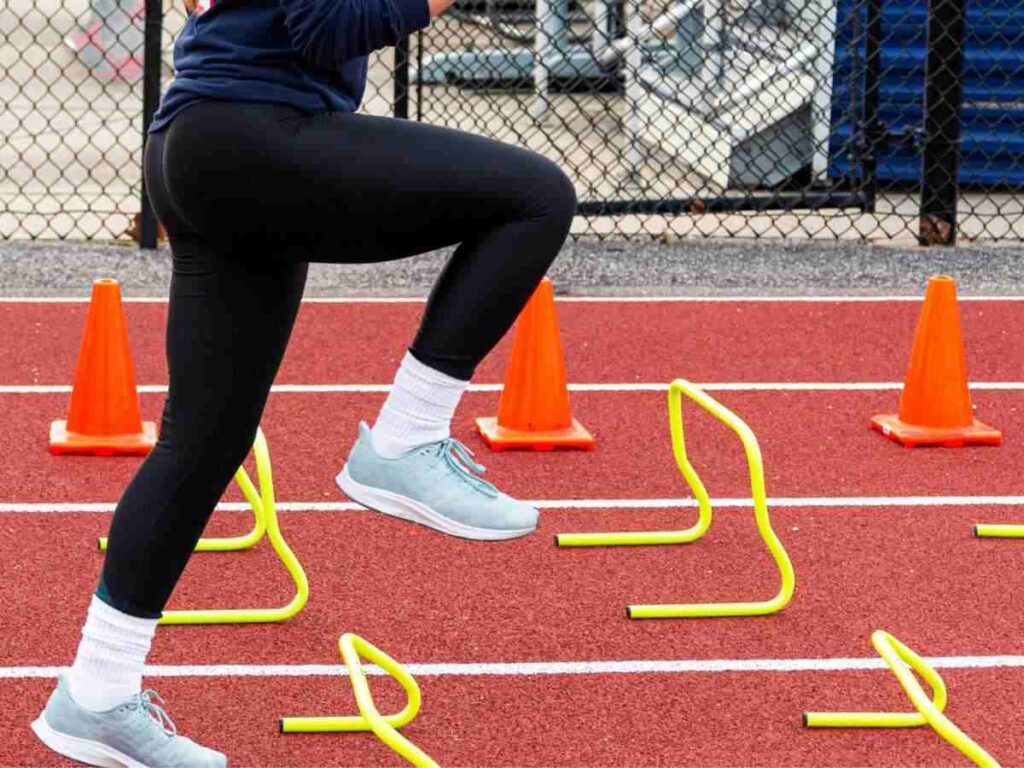
Side Shuffle
The side shuffle, also known as the lateral shuffle or side-to-side shuffle, is a dynamic workout that includes quick and controlled movement laterally. It is a basic movement that is frequently utilized in sports, fitness training, and agility drills.
The side shuffle works the lower body muscles, especially the hips, thighs, and glutes, while also improving cardiovascular endurance and coordination. In this post, we’ll look at the mechanics and advantages of the side shuffle, as well as how to include it in your workout program.
To perform the side shuffle, follow these steps:
- Begin by standing with your feet shoulder-width apart and your knees slightly bent.
- Shuffle to the Right: With your right foot, take a step to the right, pushing off with your left foot.
- Shuffle to the Left: Quickly return to the starting position with your left foot.
- Repetition: Continue shuffling from side to side quickly and controllably.
Benefits of the Side Shuffle:
- Improved Lateral Movement: The side shuffle improves lateral movement skills, which are important in sports and activities that need quick direction changes.
- Agility and Coordination: Side shuffle practice enhances agility and coordination, allowing for more precise and controlled motions.
- Lower Body Strength: The side shuffle targets lower body muscles such as the quadriceps, hamstrings, glutes, and adductors, increasing strength and power in these regions.
- Cardiovascular Endurance: Because of the fast side-to-side motions, the side shuffle is a good cardiovascular exercise.
- Injury Prevention: The side shuffle improves the muscles that stabilize the hips and knees, which reduces the chance of injury during sports and physical activities.
Carioca Sideways Running
Carioca sideways running, also known as carioca, is a dynamic and lateral movement practice that is utilized in a variety of sports, fitness training, and agility workouts. It entails crossing one foot over the other while moving laterally, which promotes better footwork, coordination, and agility. Thus, forming a part of the fifth component, agility, from the 5 components of fitness.
Carioca is a common drill in sports that need quick changes of direction, such as soccer, basketball, football, and track & field. We will discuss the physics and benefits of carioca sideways running in this article, as well as how to include it in your training program.
To perform carioca sideways running, follow these steps:
- Begin in a standing position with your feet shoulder-width apart and your knees slightly bent.
- Begin the Movement: Take a step to the side with your right foot, crossing it in front of your left foot.
- Step your left foot behind your right foot, crossing it behind you.
- Continue the Movement: As you go laterally, cross one foot over the other in a rhythmic and continuous way.
- Maintain Good Form: Keep your knees slightly bent, your center of gravity low, and your core engaged for stability and balance.
Benefits of Carioca Sideways Running:
- Increased Agility: Carioca improves agility by requiring quick direction changes and quick footwork.
- Footwork and Coordination: Carioca practice increases footwork and coordination, both of which are important qualities in many sports.
- Dynamic Warm-Up: Carioca can be utilized to prepare the body for more intense physical activity as a dynamic warm-up workout.
- Improved Lateral Movement: Carioca’s lateral movement helps to develop the muscles responsible for lateral stability.
- Cardiovascular Endurance: Carioca raises the heart rate, making it a good cardiovascular endurance workout.
Speed Ladder Drills
Speed ladder drills are dynamic exercises done using an agility ladder, which is a portable ladder with equally spaced rungs. These drills are intended to increase footwork, speed, agility, and coordination, making them a popular training tool for athletes, fitness enthusiasts, and anybody looking to improve their general athleticism.

Speed ladder drills, part of the 5 components of fitness, are both useful and pleasant because they require players to move with precision and rhythm. In this post, we will look at the mechanics and benefits of speed ladder drills, as well as a few popular workouts to add to your training regimen.
Benefits of Speed Ladder Drills:
- Improved Footwork: Speed ladder drills require participants to lift their feet fast and accurately, which leads to better footwork and proprioception.
- Improved Agility: The rapid changes in foot posture required in speed ladder workouts improve agility, which is important for sports and activities that require quick direction changes.
- Increased Speed: Practicing speed ladder drills on a regular basis can result in faster foot speed as well as better overall speed and acceleration.
- Cardiovascular Endurance: Because speed ladder drills are high-intensity, they raise the heart rate, making them an effective cardiovascular exercise.
- Versatile Training: Because speed ladder drills can be altered for different fitness levels and sports, they are appropriate for athletes of all disciplines.
Popular Speed Ladder Drills:
- In-and-Out: Step one foot into a square ladder, then the other. Step your first foot outside the ladder, then your second foot. Repeat the pattern all the way down the ladder.
- Side Shuffle: Shuffle sideways through the ladder, one foot inside each tile, followed by the other. Keep a low, athletic stance throughout.
- Carioca: Go through the ladder doing the carioca sideways running practice, crossing one foot over the other as you travel laterally.
- High Knees: Run up and down the ladder, raising your knees as high as you can with each step.
- Skater Jumps: Jump laterally from one foot to the other, landing with one foot inside and one foot outside a ladder square. Repeat the procedure.
Incorporating Speed Ladder Drills into Your Training Routine
- Step one foot into the square ladder, then the other. Step your first foot outside the ladder, followed by your second. Rep the pattern until you reach the bottom of the ladder.
- Side Shuffle: Shuffle through the ladder sideways, one foot inside each tile, then the other. Maintain a low, athletic stance at all times.
- Carioca: Repeat the carioca sideways running drill, crossing one foot over the other as you progress laterally.
- Run up and down the ladder, raising your knees as high as possible with each step.
- Skater Jump: Land with one foot within and one foot outside a ladder square by jumping laterally from one foot to the other. Repeat the previous step.
Lateral Low Hurdle Run
The lateral low hurdle run is a dynamic and difficult workout that increases agility, speed, and lateral movement. This drill requires quick and controlled movement laterally over a series of low hurdles. Athletes, fitness lovers, and sports instructors use it as a popular training tool to improve lateral speed, coordination, and overall athletic performance.
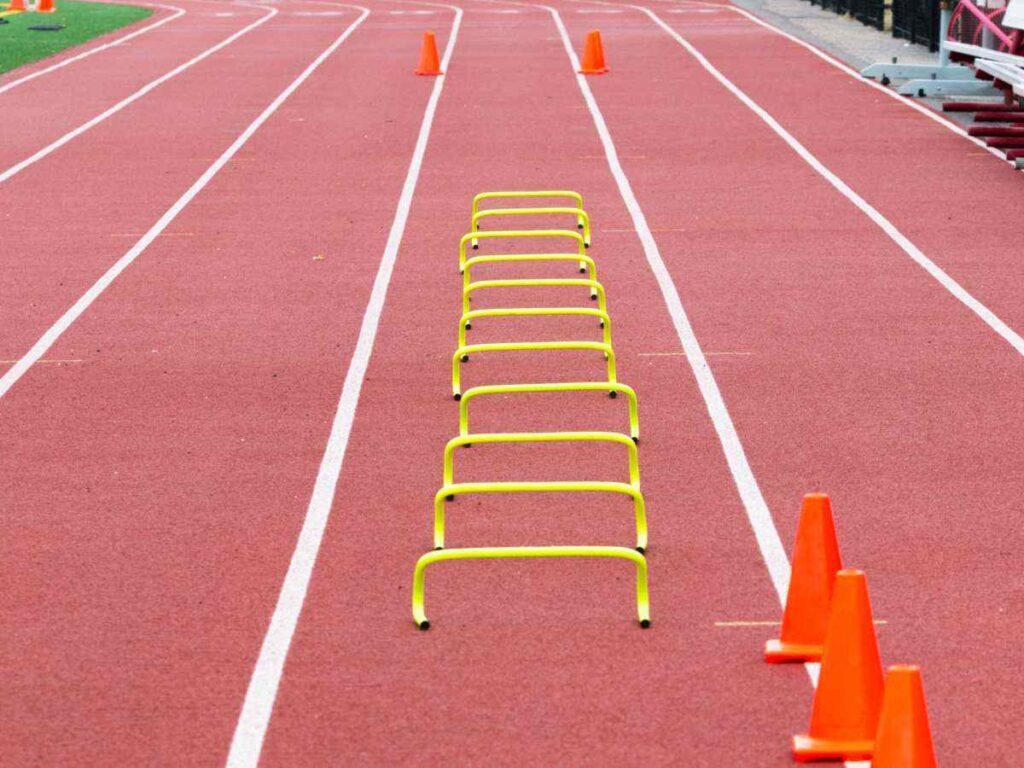
As players seek to clear the hurdles with precision and efficiency, the lateral low hurdle run adds a fun and competitive element to training. In this post, we’ll look at the mechanics and benefits of the lateral low hurdle run, as well as how to implement it into your workout program.
To perform the lateral low hurdle run, follow these steps:
- Place a series of low hurdles in a straight line, leaving adequate space between each hurdle for lateral movement.
- Begin by standing on one side of the hurdles, feet shoulder-width apart and knees slightly bent.
- Begin the Movement: With your lead foot, step laterally over the first hurdle, rapidly followed by your trailing foot.
- Maintain Lateral Movement: Move laterally over each hurdle in a quick and controlled motion, clearing the obstacles with each step.
- Maintain Good Form: Keep your knees slightly bent, your center of gravity low, and your core engaged for stability and balance.
Benefits of the Lateral Low Hurdle Run:
- Increased Agility: The lateral low hurdle run necessitates quick changes of direction and quick footwork, which increases agility and reactivity.
- Better Lateral Movement: By clearing the obstacles laterally, this exercise strengthens the muscles responsible for lateral stability and rapid side-to-side motions.
- Improved Speed and Quickness: Practicing the lateral low hurdle run on a regular basis might result in better foot speed and overall quickness.
- Cardiovascular Endurance: Because this drill is high-intensity, it raises the heart rate, making it an effective cardiovascular exercise.
- Versatile and Fun Training: The lateral low hurdle run brings diversity and excitement to training sessions and can be customized for players in a variety of sports.
Cone Drills
Cone drills are an adaptable and effective training tool for increasing speed, agility, and general athletic performance. These exercises feature players weaving in and out of cones arranged in various configurations, pushing them to change direction swiftly and precisely. Because they improve footwork, lateral movement, and coordination, cone drills are popular among athletes, fitness enthusiasts, and sports instructors.

They can be tailored to players of all sports and fitness levels, making them an invaluable supplement to any training regimen. In this post, we will look at the mechanics and benefits of cone drills, as well as a few common exercises to include in your training routine.
Benefits of Cone Drills:
- Improved Agility: Cone drills require participants to change direction quickly, resulting in increased agility and responsiveness on the field or court.
- Increased Speed: The high-intensity nature of cone drills aids in increasing foot speed, which leads to greater acceleration and sprinting ability.
- Improved Lateral Movement: Weaving in and out of cones helps to strengthen the muscles responsible for lateral stability, which is necessary for side-to-side motions in sports.
- Cardiovascular Endurance: Because cone exercises are fast-paced and repeated, they raise the heart rate and provide an effective cardiovascular workout.
- Sports-Specific Training: Cone drills may be adjusted to mimic the movements and footwork patterns unique to many sports, making them applicable to players from a variety of disciplines.
Conclusion
Incorporating these simple yet powerful exercises from the above-mentioned 5 components of fitness into your regular routine will help you improve your balance, stability, and proprioception, resulting in better overall body control and coordination. Begin gradually and progress at your own rate, like with any exercise.
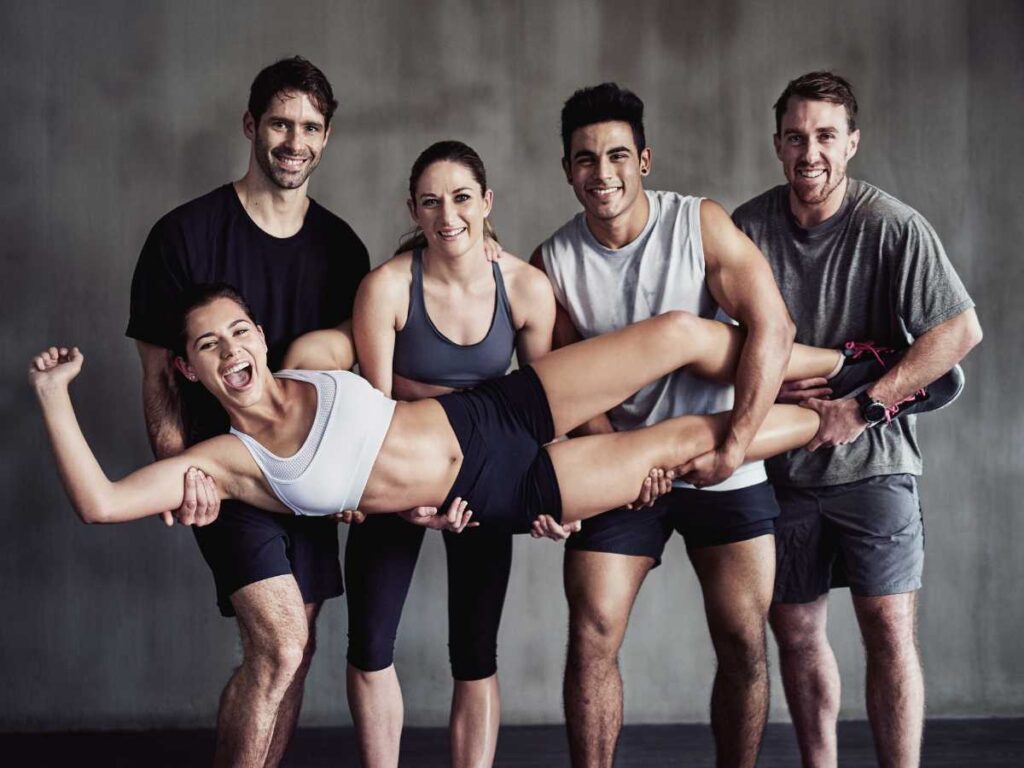
With regular practice of any form of the 5 components of fitness, you can help your body improve your physical capabilities and enjoy the harmony of mind and body that comes with increased balance. Before beginning any new workout program, contact a healthcare provider or fitness professional, especially if you have any pre-existing health ailments or concerns. So when are you planning your next fitness activity?
- Amazing 5 Components Of Fitness On How To Live Longer And Achieve Goals - August 13, 2023
- Top 11 Health Parameters To Live Long And Prosper - July 7, 2023
- Can Bluetooth Earbuds Radiation Cause You Harm - June 11, 2023
